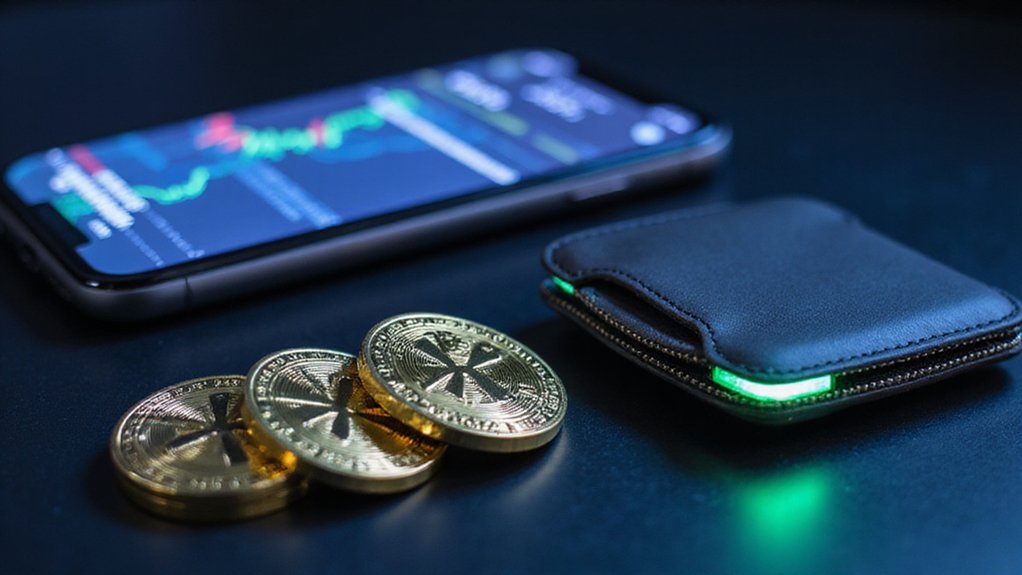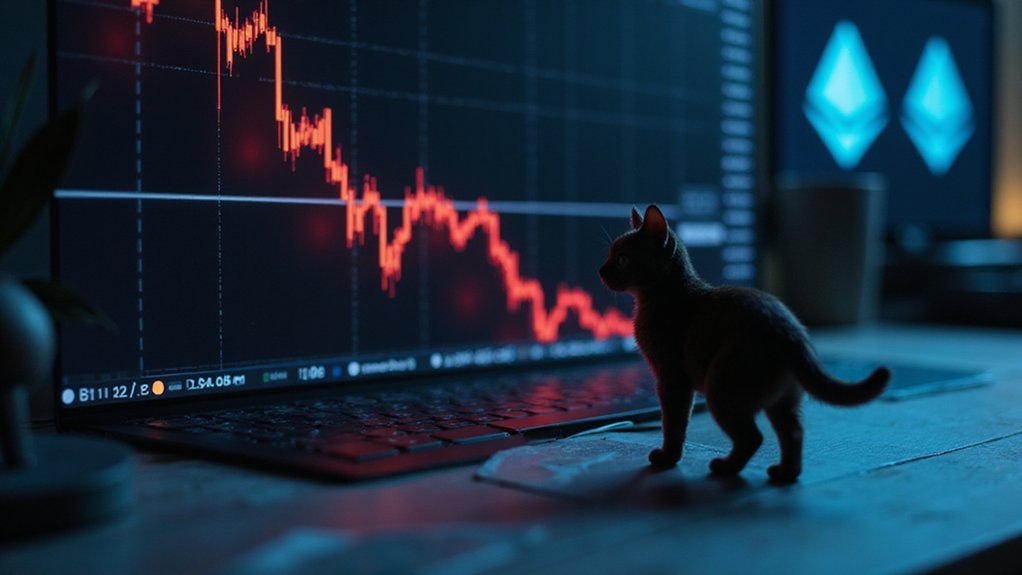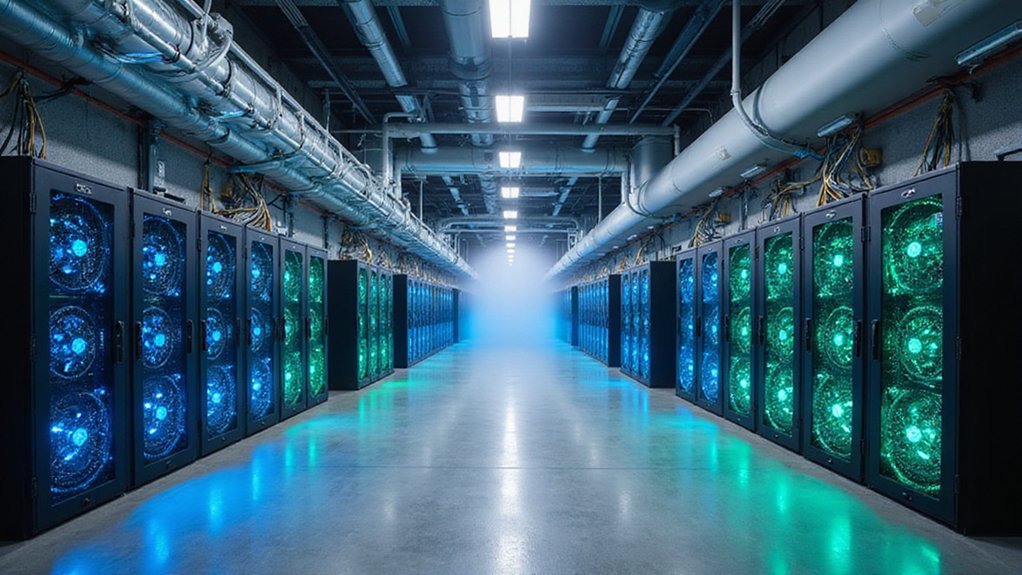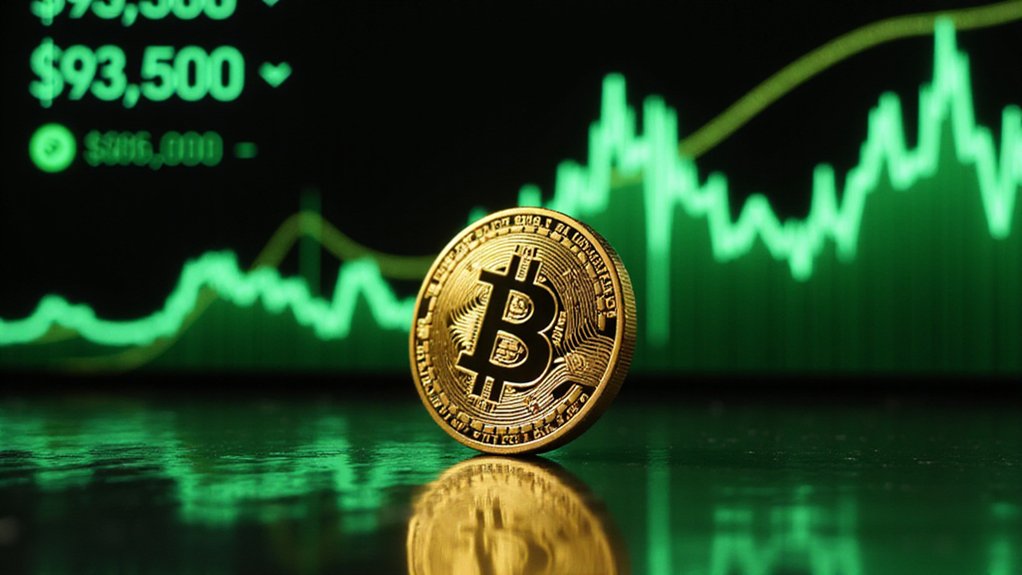Purchasing XRP involves selecting a compliant exchange (Coinbase, Kraken, or Gemini), completing identity verification, funding your account via bank transfer or debit card (with their respective speed-cost tradeoffs), and executing your order—preferably using limit orders during volatile periods. After acquisition, consider security options ranging from convenient exchange storage to the paranoid’s darling: hardware wallets. At £1.57 per token with minuscule transfer fees ($0.0002), XRP offers cross-border payment utility that warrants deeper examination beyond mere speculation.
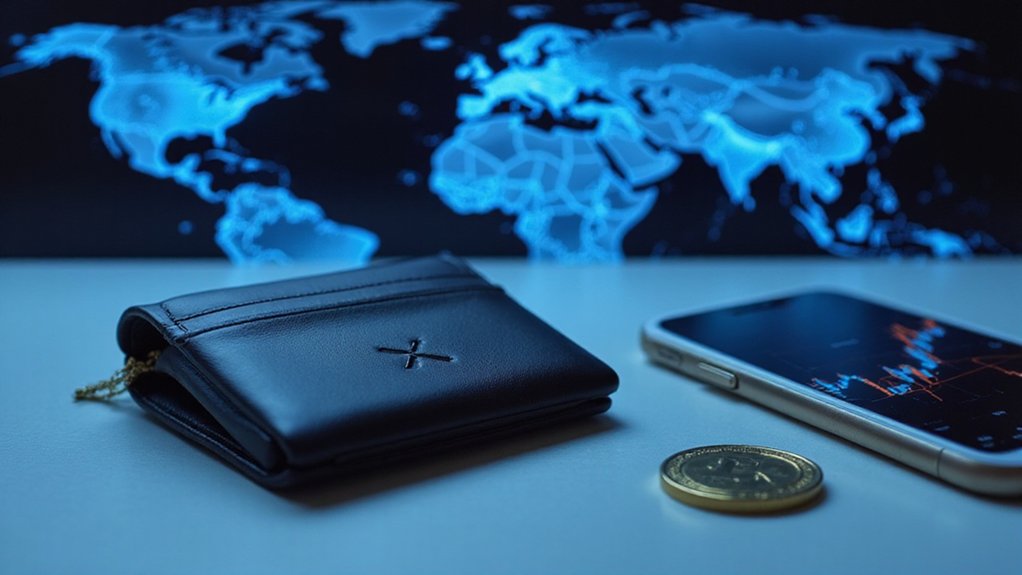
Where does one begin on the labyrinthine journey of acquiring XRP, the digital asset that has weathered regulatory storms while maintaining its position among cryptocurrency’s elite? The process commences with selecting an appropriate exchange—a decision not to be taken lightly. Coinbase and Kraken stand as popular options, with the latter boasting access to over 300 cryptocurrencies alongside XRP. Gemini offers recurring purchase functionality, while budget-conscious investors might gravitate toward Robinhood’s fractional purchases starting at a mere dollar (though one might question the wisdom of purchasing quantities that minuscule given transaction costs).
The account creation ritual follows a predictable choreography: government-issued identification, proof of address, and the now-ubiquitous two-factor authentication setup. Regional restrictions apply—a fact that continues to perplex those living in jurisdictions deemed somehow less worthy of financial innovation than others. Once verified (a process that can take hours or days, depending on the capriciousness of automated systems), funding options present themselves with their respective trade-offs.
Bank transfers offer economical appeal but test one’s patience; debit cards provide instant gratification at premium rates. The sophisticated investor might leverage ACH or wire transfers for substantial acquisitions, while the technologically inclined may utilize mobile payment integrations. When executing the purchase itself, market orders guarantee immediate execution, whereas limit orders enable price targeting during volatile periods—a sensible strategy in a market known for its dramatic fluctuations. Be aware that certain webpages for cryptocurrency hardware wallets like Ledger may be currently unavailable due to new regulations in specific regions such as the UK. According to current market data, one XRP token is currently valued at £1.57 in British pounds.
Post-purchase considerations demand attention to security protocols. While exchange storage provides convenience, hardware wallets represent the gold standard for those serious about asset protection. The XRP Ledger’s nominal transaction fee ($0.0002) makes transfers between wallets mercifully inexpensive compared to other blockchain networks. XRP serves as the native token of the XRP Ledger, primarily designed to enable cost-efficient cross-border payments through the Ripple network.
Finally, one cannot overlook tax implications—capital gains require meticulous documentation in most jurisdictions. Unlike proof-of-stake cryptocurrencies, XRP cannot be staked, eliminating one potential income stream but simplifying the holder’s relationship with the asset. Vigilant market monitoring through customizable alerts completes the investor’s arsenal in traversing XRP’s often turbulent waters.
Frequently Asked Questions
What Is Ripple’s Role in the Banking Industry?
Ripple functions as a disruptive force in the banking sector, offering an alternative to traditional cross-border payment infrastructure.
Its RippleNet connects over 300 financial institutions across 40+ countries, facilitating near-instantaneous settlements (versus days with conventional systems) at a fraction of typical costs.
While most institutions utilize Ripple’s messaging technology without XRP, its On-Demand Liquidity service enables those bold enough to leverage the cryptocurrency for real-time liquidity management, potentially reducing operational costs by 40-70%.
How Does XRP Differ From Other Cryptocurrencies?
XRP diverges from cryptocurrency orthodoxy in several fundamental ways.
Unlike Bitcoin’s decentralized ethos, XRP operates under Ripple Labs’ semi-centralized stewardship—a structure that horrifies blockchain purists yet accelerates institutional adoption.
Its consensus mechanism eschews energy-intensive mining for a validator network, enabling transactions to settle in seconds rather than minutes or hours.
With microscopic fees ($0.0002 per transaction) and minimal energy consumption, XRP functions less as digital gold and more as practical financial infrastructure—a cryptocurrency that banks, remarkably, don’t instinctively recoil from.
What Factors Affect Ripple’s Price?
Ripple’s price oscillates at the mercy of four key variables: regulatory developments (particularly SEC litigation outcomes), broader cryptocurrency market sentiment, XRP’s diminishing supply dynamics (thanks to transaction-based “burning”), and Ripple’s technological evolution.
Institutional adoption—or lack thereof—acts as a particularly potent price catalyst, with major financial players’ embrace of XRP’s cross-border payment utility driving substantial valuation shifts.
The competitive landscape versus alternatives like Stellar and SWIFT further shapes XRP’s market positioning and, consequently, its price trajectory.
Is XRP a Security According to Regulators?
XRP’s regulatory status remains in legal limbo, embodying the SEC’s schizophrenic approach to crypto classification.
Following the 2023 court ruling, XRP exists in a peculiar regulatory purgatory—deemed a non-security in secondary markets but a security in institutional sales.
Recent developments suggest the SEC may be inching toward a commodity designation, evidenced by their tacit acknowledgment of XRP ETFs.
The final classification awaits either settlement talks or potentially a Supreme Court ruling to resolve this regulatory Gordian knot.
Can Ripple Survive Without XRP?
Financial evidence suggests Ripple would face significant challenges surviving without XRP. The company’s profitability heavily depends on XRP sales, which fund operations and strategic initiatives. While Ripple’s payment protocol could technically function without XRP, the token’s absence would necessitate alternative liquidity solutions—likely at higher costs and reduced efficiency. Ripple’s pivot to stablecoins in certain markets demonstrates adaptability, but the fundamental business model remains inextricably linked to XRP’s market viability and regulatory standing.
